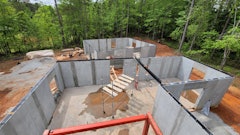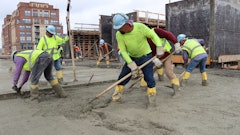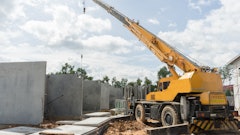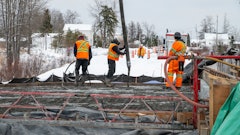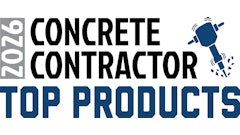
As sustainability becomes a central driver in construction, environmental product declarations (EPDs) are emerging as powerful tools for the entire building value chain. The Precast/Prestressed Concrete Institute (PCI) recently released updated, third-party verified, regionalized industry-average EPDs that reflect real production data from across 11 U.S. regions, helping stakeholders make informed decisions based on location, product type, and performance.
For precast concrete producers, contractors, architects, and designers, EPDs are more than just documents, they are strategic assets that support performance, transparency, and collaboration in delivering lower-carbon, high-performing projects. “Contractors need clear, verifiable data that fits into their bid process and schedule. PCI’s regionalized industry-average EPDs provide exactly that: a streamlined way to meet today’s project demands while preparing for tomorrow’s low-carbon future,” said Thomas Ketron, PCI’s director of sustainability.
What is an EPD?
Contractors tasked with delivering projects on time and on budget now face a new requirement: sustainability.
An EPD is a standardized, third-party verified report that communicates the environmental impact of a product throughout its life cycle. For most materials and products, this typically includes the cradle-to-gate stages (raw material extraction through manufacturing), though some EPDs may also include transportation, installation, and end-of-life phases. Governed by international standards such as ISO 14025 and EN 15804, EPDs provide key metrics like Global Warming Potential (GWP), ozone depletion, acidification, and water use, among others.
For stakeholders across the construction industry, EPDs serve as a common language for environmental performance—crucial in a market increasingly driven by green building certifications, carbon disclosure regulations, and client demand for sustainability.
Benefits for Precast Concrete Producers
For precast producers, EPDs open the door to competitive differentiation in a tightening market. As contractors and developers prioritize low-carbon materials, having an EPD positions producers as credible and forward-thinking partners. EPDs also:
- Enable Benchmarking and Improvement: By quantifying environmental performance, EPDs help producers identify emissions hotspots and provide opportunities to refine production processes, such as optimizing cement content, switching to low-carbon aggregates, or sourcing renewable energy.
- Meet Market and Regulatory Demands: Public infrastructure projects and private developments increasingly require EPDs for bidding eligibility. Producers with EPDs gain access to these high-value opportunities.
- Build Brand Trust: Transparent, third-party verified data strengthens credibility and aligns with broader ESG (Environmental, Social, and Governance) goals, enhancing reputation with investors and stakeholders.
More about EPDs and Concrete on ForConstructionPros.comWhat Concrete Contractors Need to Know About EPDs - EPDs may be used as inputs for the evaluations conducted under rating systems like LEED and Green Globes but they are not a rating system themselves. Allowing Contractors to Create EPDs for Their Concrete Mix Designs - A new partnership between GCP Applied Technologies and Athena Sustainable Materials Institute to form new EPD program. The Role of EPDs in the Decarbonization of Concrete - Understanding EPDs can be a significant selling point for property owners looking to bid out their projects to sustainability-minded organizations |
Advantages for Contractors & Builders
Contractors tasked with delivering projects on time and on budget now face a new requirement: sustainability. EPDs offer contractors a practical tool for:
Material Comparison and Selection: EPDs allow contractors to compare products based on their environmental impact, making it easier to choose precast concrete elements that align with project sustainability and resiliency targets.
Industry-average EPDs, such as those published by PCI, provide a benchmark for comparing environmental performance across material types and suppliers. When available, product- or plant-specific EPDs allow for even finer-grained analysis, offering contractors the ability to select products that meet both project requirements and sustainability targets.
- Streamlining Green Building Compliance: Whether aiming for LEED, or other certifications, EPDs simplify documentation and compliance processes, helping avoid delays and added costs.
- Risk Reduction: As environmental disclosure regulations evolve (e.g., Buy Clean policies), using products with verified EPDs ensures contractors remain compliant and mitigate future liability.
 @bannafarsai - stock.adobe.com
@bannafarsai - stock.adobe.com
Empowering Architects and Designers
Architects and designers are on the front lines of sustainable construction. EPDs help transform high-level sustainability goals into actionable design decisions. Specifically, EPDs enable:
- Lifecycle Thinking in Design: Designers can assess how different precast concrete options impact a building’s overall carbon footprint, enabling early design decisions that minimize environmental impact.
- Informed Specification: With detailed environmental data, designers can confidently specify products that support project sustainability goals while ensuring structural performance and aesthetic intent.
- Collaboration with Engineering and Construction Teams: EPDs provide a shared data set for interdisciplinary collaboration, helping teams align on material choices and optimize the project holistically.
Driving Innovation and Sustainability at Scale
EPDs are fast becoming essential to building the next generation of resilient, responsible infrastructure.
As demand for low-carbon construction accelerates, the adoption of EPDs in precast concrete is not just a response to regulation; it's a catalyst for innovation. Precast concrete producers can leverage EPD data to develop lower-carbon mixes, integrate supplementary cementitious materials (SCMs), and improve factory energy efficiency. Meanwhile, digital tools and BIM platforms increasingly integrate EPDs, enabling smarter material selection and environmental modeling during the design phase. PCI’s regionalized EPDs not only meet Buy Clean and LEED requirements, they also set a consistent, high-integrity baseline for innovation in materials and manufacturing practices across the precast concrete industry.
Additionally, as clients from municipalities to tech giants set stricter carbon benchmarks, projects that integrate EPD-backed materials are better positioned to win approval and funding.
The Bottom Line
Environmental Product Declarations represent a strategic advantage for everyone involved in precast concrete construction. For producers, they provide a path to product improvement and market growth. For contractors, they offer confidence in sourcing and compliance. For architects and designers, they unlock data-driven design and material innovation.
As the industry faces mounting pressure to decarbonize, EPDs are fast becoming essential to building the next generation of resilient, responsible infrastructure. Those who invest in transparency today are not just meeting market expectations — they’re leading the transformation of tomorrow’s built environment.
More information on the Baptist Hospital Campus project (pictured at top of this article) can be found at PCI.org.
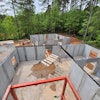

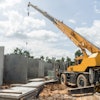


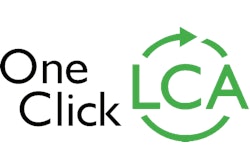

![Img 1707[56]](https://img.forconstructionpros.com/files/base/acbm/fcp/image/2023/04/IMG_1707_56_.6437076c97961.png?auto=format%2Ccompress&fit=crop&h=167&q=70&rect=0%2C462%2C1920%2C1080&w=250)
